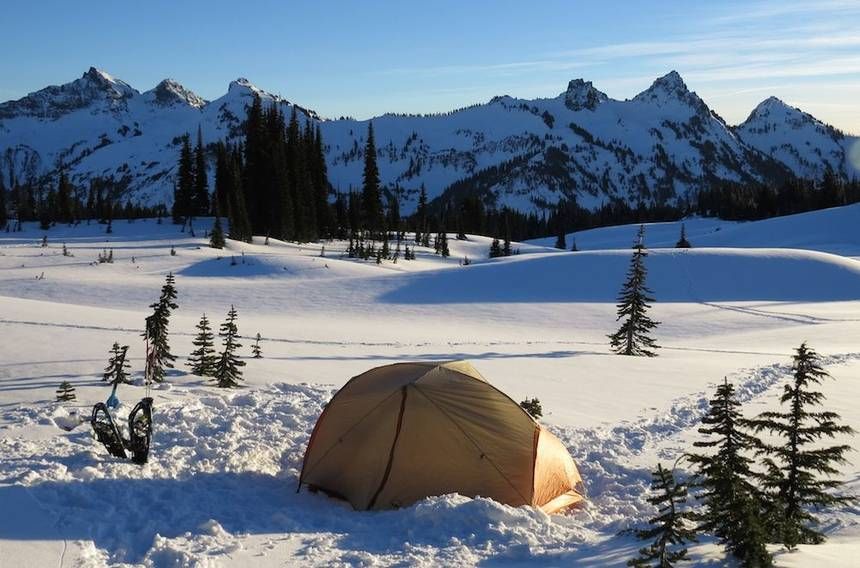10 winter camping tips for every camper

Winter camping is a great way to get outside during the coldmonths, provided you plan ahead in detail. Here are some tips on how to getstarted.
Therewas a time when winter camping was a way of life for many people. In the earlyyears of Canada’s settlement by Europeans, the voyageurs spentmonths, sometimes years, traversing vast distances of wilderness to buy animalpelts from distant Native trading posts. They learned much about winter campingfrom the Native tribes, who had been doing it for millennia and had perfectedthe art of living outdoors in the middle of winter.
Fortunatelyyou don’t have to be a voyageur nowadays to enjoy the beauty and solitude ofwinter camping. Technology has evolved over the centuries, making it mucheasier to spend time outside in all seasons. Assuming you already haveexperience with summer camping, here are a few tips for getting started onwinter camping, though this list is far from exhaustive:
1. Start by extending your camping season. If you have only ever camped in the summer, considercamping in April or November, when the weather is quite cool and, depending onwhere you live, there may be snow on the ground.
2. Don’t go too far from home. For your first time, choose a location that's fairlyclose to your house. That allows you to bail if it doesn’t go well or if youneed to pick up additional supplies. You could also go ‘car camping’ in winter,which means you’d drive to a location rather than trek to it.
3. Prepare meals as fully as possible. When it’s freezing cold outside, it’s much easier toreheat premade food than it is to actually prepare the food over a tiny campstove.
4. Consult friends or local experts. Ask around your community for a serious camper whocan give you tips on where to go. You could even ask to go along to learn theropes from someone with experience. Borrow gear instead of buying it for thefirst few times in order to know what you like to use.
5. Respect the weather forecast. It can be disappointing to have to change yourplans, but winter camping can be utterly miserable in bad weather. If you livein the mountains, pay attention to avalanche warnings. Be flexible, which willultimately keep you safer.
6. Dress smartly. Wear layers, starting with underwear, followed bythe insulating layer(s), and finished with a shell. Avoid cotton, as it is poorinsulator when wet and takes a long time to dry. Wool and synthetics are abetter option for winter camping.
7. Use a sled to haul your gear. The snow can be used to your advantage! It is mucheasier to pull than to carry all the extra gear required by winter camping.Once you get the strap positioned properly across your chest, it’s surprisinglyeasy to move a lot of weight.
8. Don’t go alone. You should always camp with someone else when theweather is cold, in case of emergencies. Always leave behind a detailed tripplan and do not deviate from that plan.
9. Choose a sheltered camping spot. Pack down snow before setup so that your bodydoesn’t melt a deformation into the snow. Or lay down a bed of balsam boughs,as Native people did for so many centuries, to carpet the ground below thetent.
10. Make sure you take the 10 survival essentials. This list comes
Navigation(map and compass)
Sun protection (sunglasses and sunscreen)
Insulation (extra clothing)
Illumination (headlamp/flashlight)
First-aid supplies
Fire (waterproof matches/lighter/candles)
Repair kit and tools (knife)
Nutrition (extra food)
Hydration (extra water)
Emergency shelter
And,of course, ALWAYS remember to Leave No Trace!
